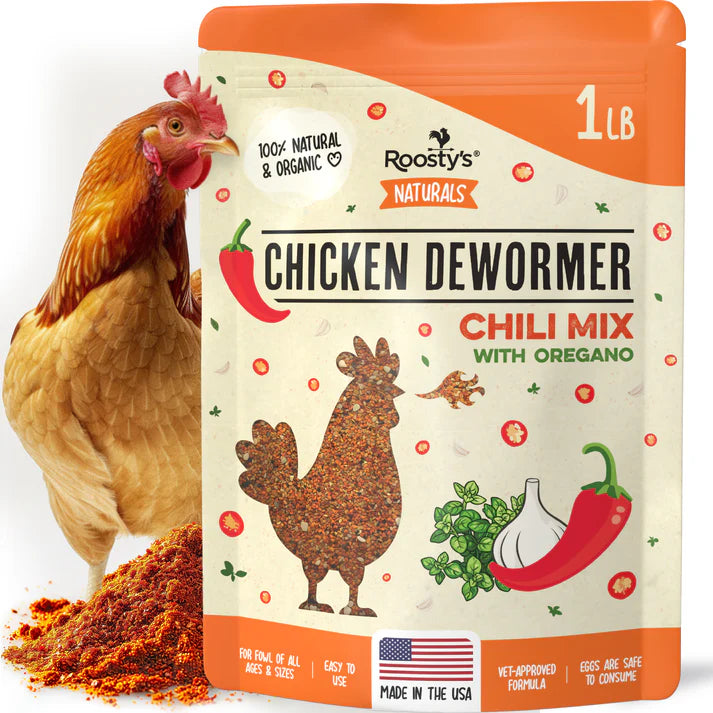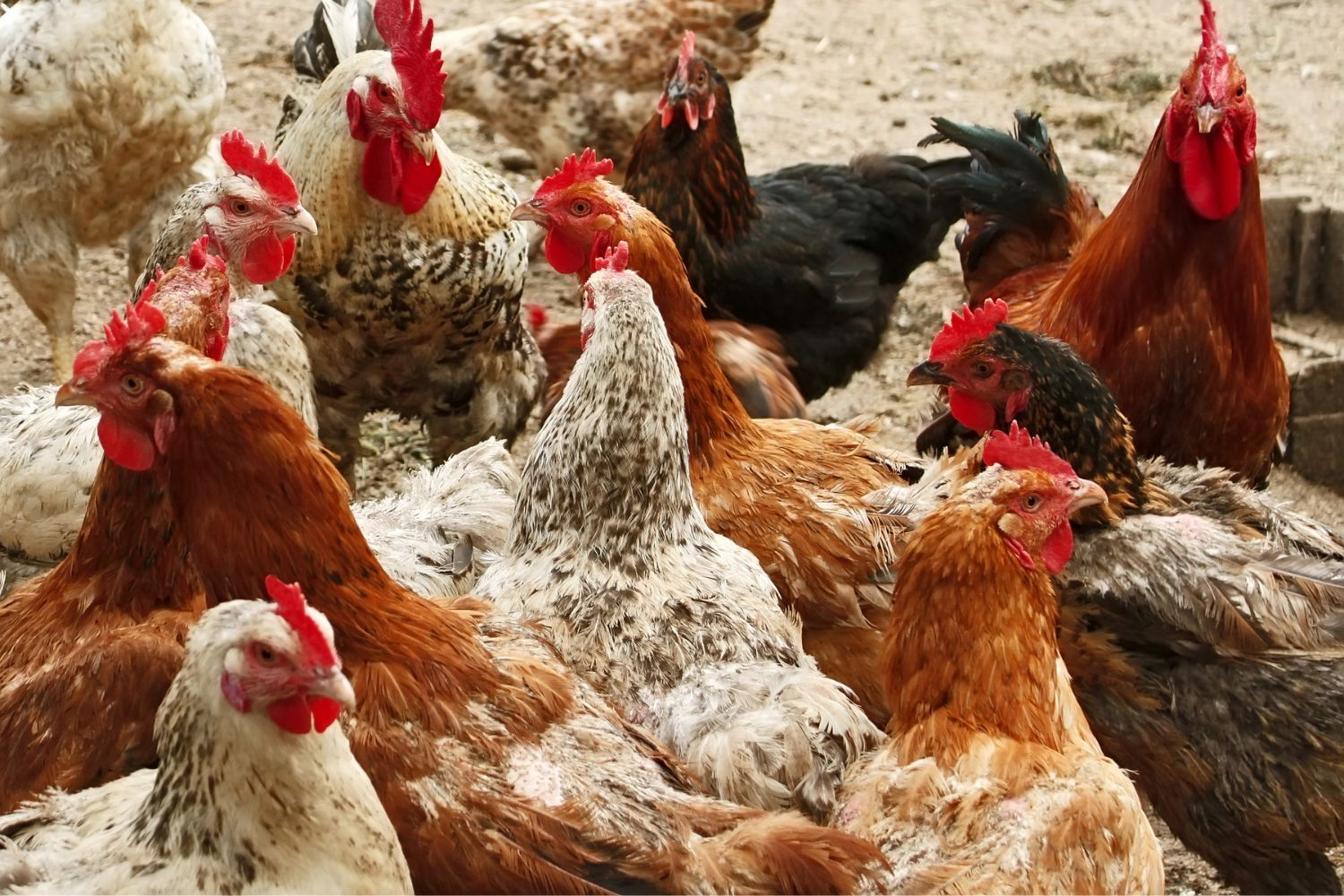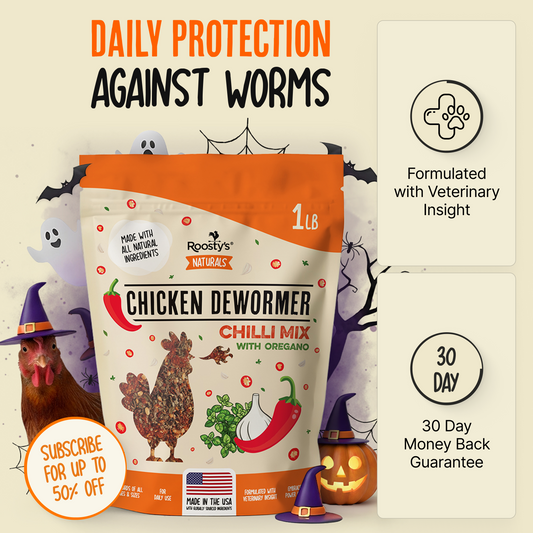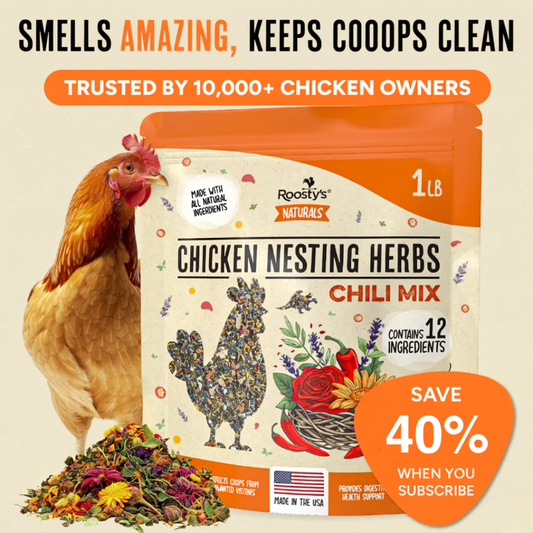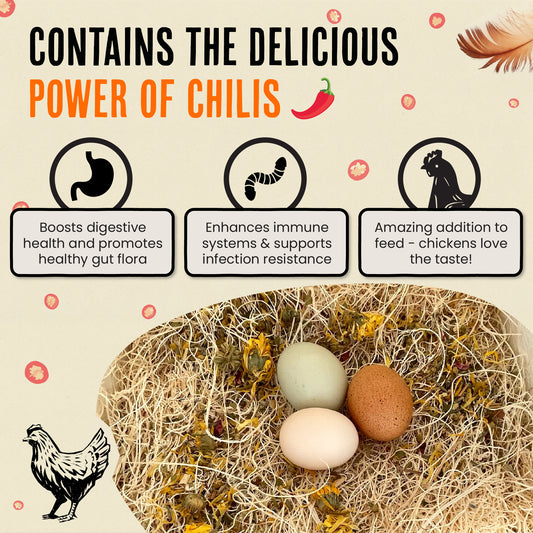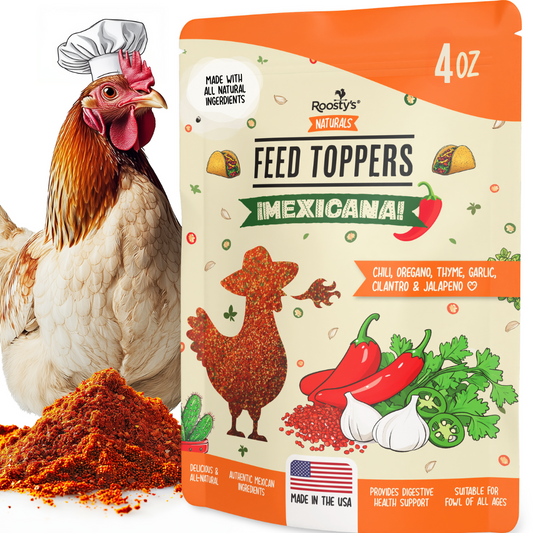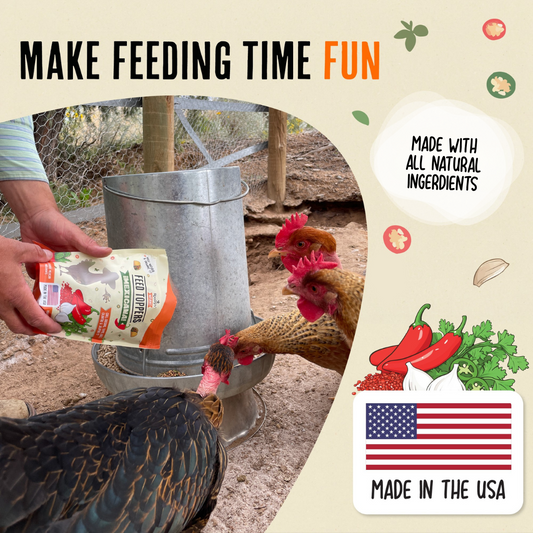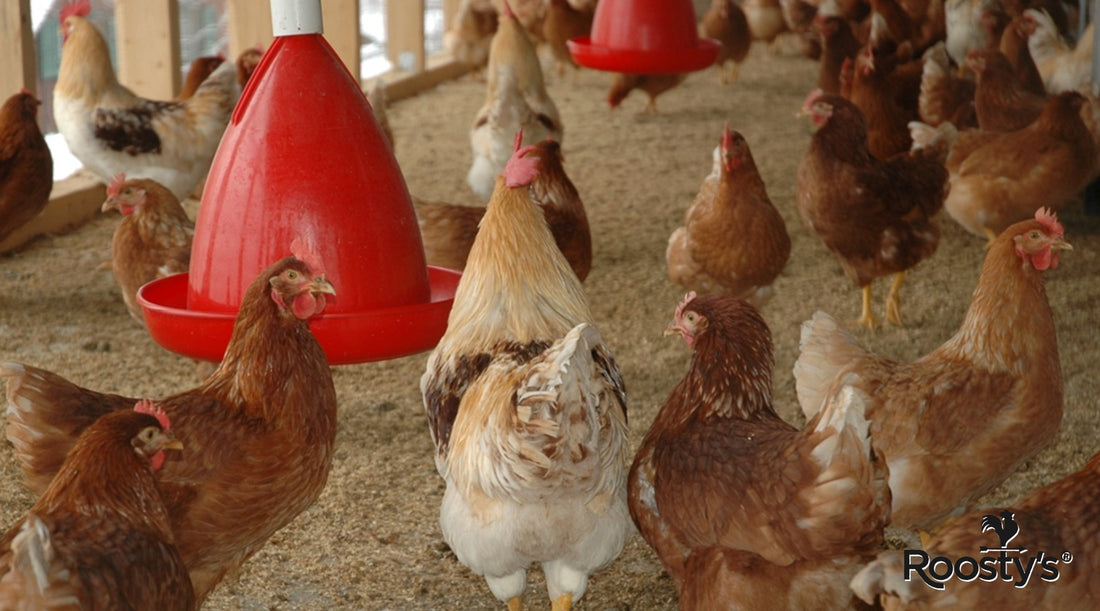
The Best Sand for a Chicken Coop: A Complete Guide

There is a lot to think about when you become a chicken keeper. Although chickens are hardy, self-sufficient creatures in comparison with most pets, they do have certain needs, including a comfortable, safe home environment.
If you’re buying or building a chicken coop in preparation to welcome some new feathery members of the family, it’s crucial to make sure that you provide your flock with a secure, spacious hen house.
One decision you’ll need to make when getting your coop ready for its new residents is which materials to use for flooring and bedding.
Sand is a popular choice, but what type of sand do you use and what do you need to know before you start creating your version of Coop-a-cabana in the back garden?
In this guide, we’ll discuss the benefits of using sand for a chicken coop and explore the different types of sand that work well for hen houses.
We’ll also share advice and tips to help you create a fantastic new home for your chickens using sand and provide information to help you address any problems or pain points.
What are the advantages of using sand for your chicken coop?
Before we delve deeper into different types of sand to help you find the best sand for your chicken coop, it’s useful to consider the advantages of choosing sand over other materials.
There are multiple options to explore when it comes to what to put on the floor of your chicken coop. While materials like concrete and plywood are brilliant for the base of the chicken coop, adding bedding is important for enhancing comfort and providing safe spaces for your flock.
Softer materials are easier on the feet and legs, they can add warmth and they can provide insulation. The most commonly used bedding materials include:
- Sand
- Wood shavings
- Straw
In this detailed guide, we’re focusing on sand. Just as sand offers a soft, cushioned surface for us humans to enjoy soaking up the sunshine and catching rays on vacation, sand can be an excellent option for a chicken coop.
Here are some of the most significant advantages of choosing sand for your hen haven:
1. Sand is a natural material
Where possible, it’s best to opt for natural materials in your chicken coop. This is often beneficial to chicken health as it can reduce the risk of exposure to toxins, and it’s also good for the environment.
As well as being a naturally occurring material, sand also represents a natural choice in terms of the environments chickens are used to.
For thousands of years, chickens have roamed the planet, often dwelling in forests and areas of dense vegetation and foliage close to rivers, creeks, streams and pools. As such, they are used to sand.
2. Easy to clean
Most chicken keepers don’t want to spend every minute of their spare time scooping up poop. Chickens can produce a lot of waste in a short space of time, especially in large groups.
When you’re weighing up the pros and cons of different bedding materials and creating a litter for your hens, it’s beneficial to consider ease of cleaning.
Sand is a great option because it not only creates a natural litter for your chickens to relieve themselves in comfort, but it also makes it easy to keep on top of cleaning.
Saving time on removing waste from the coop is likely to be music to any keeper’s ears.
3. Promotes healthy, hassle-free toileting
If you’ve researched flooring materials for your chicken coop or read articles about bedding, you might have come across information about chicken litter.
Chickens nest and lay eggs in nesting boxes and they tend to prefer sleeping on perches off the ground. This means that the bedding you use is not there solely for comfort.
Adding soft bedding will make walking around the coop more pleasant and enjoyable for your hens, but it’s also important to consider toileting.
Creating a chicken litter promotes healthy, hassle-free toileting. Sand makes excellent litter because it releases moisture quickly, it reduces odors and it helps to dry chicken poop for quick and simple cleaning.
4. Creates a more hygienic environment
As sand is easy to clean, it helps to create a more hygienic environment for chickens. If you’re willing to clear up the waste every couple of days, you should find that your coop looks and smells fresh and clean.
Maintaining high levels of hygiene will help you lower the risk of illnesses linked to pathogens and keep your flock fighting fit.
5. Clean feet
Adding sand to your chicken coop is a simple, effective way to help your hens keep their feet clean.
As they toddle through the sand after exploring the garden or stretching their legs in the chicken run, the sand will gently remove mud and dirt.
This helps to keep the rest of the coop clean and it should also mean that any eggs you collect look more appetizing.
6. Encourages dust bathing
Just like us, chickens are partial to a bath, but they adopt a very different approach from us.
Hens use dirt and dust bathing to keep themselves clean. While it may seem like an odd way to freshen up, a good roll in the dirt works wonders for our feathered friends.
For chickens, hygiene is important, but they might not always be fussed about going out into the garden or exploring the run, especially during the winter when it’s cold and wet.
Using sand as a bedding material in your chicken coop encourages regular bathing.
Your hens will be able to dust bathe whenever they wish without leaving the comfort of the coop.
7. Easy access to grit
Grit is essential for chickens. It plays an integral role in enabling hens to break down and digest food.
By choosing sand for your coop, you can ensure that your chickens have easy access to grit all year round.
8. Reduces risks of ammonia build-up
We all know that ammonia is bad news for our flocks. Anything that reduces the risk of ammonia building up inside a chicken coop is a bonus.
As sand is inorganic, it doesn’t break down and it releases moisture rapidly. This is important because damp bedding provides a sanctuary for mold to flourish.
Before you know it, bacteria levels rise and ammonia builds up. Opting for sand will help you keep your hens in rude health.
9. Cost-effective
It may cost you more to kit your chicken coop out initially if you choose sand, but in the long term, sand is a really cost-effective solution.
You can clean it quickly and simply and you don’t need to replace it often, which means that you’re getting good value for money.
10. Summer and winter benefits
Sand offers benefits for chicken keepers during the summer and winter. In the summer, sand can keep coops cool, providing welcome respite from the heat for your flock.
During the colder winter months, sand helps to lower the risk of frostbite by eliminating excess moisture.
Choosing the right sand for your chicken coop

Now that we’re familiar with the amazing advantages of choosing sand for your chicken coop, the next decision to think about is which type of sand to use.
Unless you have a background in construction, farming or geology, you might only be familiar with the sand you see on beaches or in playgrounds.
There are actually several different types of sand, many of which are ideal for use in a chicken coop.
To reap the rewards of using sand in a chicken coop, it’s crucial to know which type is best for your chickens.
Not all types of sand are suitable for keeping chickens.
If you like the idea of adding sand to your coop, here’s our pick of the top choices:
1. Construction sand (coarse sand)
Also known as builder’s sand and coarse sand, construction sand is one of the best options for a chicken coop.
Construction sand is chunkier than the fine, dusty sand you often find in play areas. It contains particles of different sizes and has a gritty texture.
2. River sand
River sand is a natural material, which is found close to rivers, beaches and inland waterways. Boasting a granular, grainy texture, this type of sand works well in chicken coops.
3. Concrete sand
Concrete sand has a medium-coarse texture, which makes it ideal for chicken coops. Characterized by its composition of larger particles and tiny pebbles, concrete sand helps to keep dust at bay.
4. All-purpose sand
As you can probably guess from the name, all-purpose sand is the all-rounder of the group. Suitable for a wide range of environments and projects, all-purpose sand can be used in chicken coops.
When comparing all-purpose sand with different types of sand for a chicken coop, it’s wise to consider the saying ‘Jack of all trades and master of none.
While there’s absolutely nothing wrong with using all-purpose sand for your chicken coop, you may find that there are better options.
Types of sand to avoid
Some types of sand are not suitable for chicken coop bedding or chicken litter. These include:
- Play sand: play sand is relatively cheap and easy to source, but the advantages stop here. Made using ground quartz, play sand is ultra-fine and it’s often very dusty. Using play sand could increase the risk of respiratory illnesses.
- Sandbox sand: if you’re tempted to borrow some sand for your kids’ sandbox, resist the temptation to save yourself a trip to a builder’s yard or store. Sandbox sand is not suitable for chicken coops. Like play sand, sandbox sand is very fine and it lacks the texture and grittiness of coarser sand, which means that it creates a lot of dust. Some sandbox products are also made by grinding quartz. You should always avoid sand that contains quartz when shopping for your chicken coop.
Benefits of using construction sand for your chicken coop
Construction sand is often touted as the top choice for chicken coops. It has a medium-coarse texture, which makes it ideal for chicken bedding and litter.
If you’re looking to buy construction sand, it’s worth noting that it may be described or labeled as builder’s sand, coarse sand, washed sand or washed construction sand for a chicken coop.
The main advantages of construction sand for a chicken coop include:
- A natural bedding material for your flock
- Easy and quick to clean
- Promotes better hygiene
- Provides a ready-made dust bath
- Contains grit for superior digestion
- Reduces the risk of illnesses caused by bacteria
- Encourages regular dust bathing to clean chicken feet and produce clean eggs
- Removes odors for a clean, fresh-smelling hen haven
Why coarse sand is ideal for chicken coop flooring
Coarse sand has become more popular among chicken keepers. A versatile flooring option for your chicken coop, coarse sand offers multiple benefits.
Here are some of the main reasons to consider coarse sand for a chicken coop:
- Simple, stress-free cleaning and maintenance
- Releases moisture fast and dries out chicken poop to create a more hygienic environment
- Keeps the hen house cool in the warmer summer months
- Provides a softer surface to reduce the risk of foot injuries
- Helps to eliminate unpleasant odors
- Provides a natural cleaning method for your chickens, encouraging frequent dust baths
- Inexpensive in the long term
The importance of river sand in your chicken coop
Another type of sand you may have stumbled across during your research is river sand. Naturally occurring close to water sources, river sand is considered one of the best options if you’ve decided that sand is the solution for you.
River sand has a granular consistency and it comprises fine, loose mineral and rock particles. It is not dusty like play sand and it is created by natural geographical processes, such as weathering.
River sand looks like the sand you would expect to see on a beach once the tide has gone out or on the river bed.
The benefits of river sand for a chicken coop include:
- Gritty texture helps with breaking food down for healthy digestion
- Drains effectively to reduce the risk of excess moisture within the coop
- Lowers the risk of ammonia build-up
- Ideal for dust bathing
- Helps to keep hens cool in the summer and reduces the risk of frostbite in the winter
- Naturally-occurring
- Good value for money
- Eco-friendly
Concrete sand: A strong foundation for your chicken coop
Concrete sand has much bigger and more robust particles than play sand, which means that it’s less dusty and it provides a coarser surface for chickens. Similar to coarse and construction sand, concrete sand offers a strong foundation for your chicken coop. Here are some brilliant reasons to consider concrete sand for a chicken coop:
- Reduces dust to provide a healthier environment for hens, which lowers the risk of respiratory problems
- Excellent for dust bathing
- Releases water quickly to prevent excess moisture in the coop
- Offers a comfortable, safe surface for your chickens
- Easy to clean
- Requires relatively little maintenance
- Lasts longer than many other bedding materials, such as straw and wood shavings
Where to find quality river sand for your chicken coop

Once you’ve decided what kinds of materials to use for your chicken coop floor and bedding, the next problem to solve is where to source it.
We all know that sand is plentiful on planet Earth, but the sand you collect from the beach and bags you buy in toy stores aren’t ideal for chicken coops.
It’s also pretty impractical to try to relocate tons of sand from a beach or a riverbed to your home.
The good news is that there are simpler ways to find high-quality sand for your chicken coop. Here are some tips if you’re wondering where to buy river sand for a chicken coop:
1. Buying online
Buying online is often the easiest way to find products today. All you have to do is open a search engine, enter the name or a description of the product you’re looking for and hit the return button.
If there are products available that match your search request, you should find plenty of links and shopping adverts.
Click on the ads or links that are most relevant and stick to reputable websites and well-known brands and retailers. If you find products online, you can usually add them to your virtual cart, make your payment and select delivery options.
Shopping online for sand for your chicken coop is quick and convenient and it also means that you can take advantage of services like click-and-collect at a local depot, hub or store or home delivery.
If you search online, you can also compare prices, which could save you money.
2. Hardware and home and garden stores
You may be able to find river sand and other types of sand that are suitable for chicken coops by visiting hardware and home and garden stores.
Some retailers may have a website, which will enable you to check stock before you make the journey, or order online. If you’re unsure whether stores stock what you’re looking for, it’s worth calling ahead to prevent you from wasting time.
3. Stone yards
It may be possible to contact a local stone yard to arrange delivery or collection of your chicken coop sand supplies.
Research online to find businesses in your area and ask for advice and recommendations from fellow chicken keepers. They may be able to pass on contact details or directions for yards that sell river, coarse or concrete sand.
4. Local gravel and stone companies
If you have a gravel or stone company near you, contact them to see if they supply the type of sand you’re looking for.
In many cases, it’s possible to arrange delivery, which makes getting the sand from A to B much easier.
All-purpose sand: A versatile solution for your chicken coop
All-purpose sand is a natural, graded, washed and dried material, which has a vast range of uses and applications. As you may be able to tell from the name, this is a versatile type of sand.
From construction sites to chicken coops, you can use all-purpose sand for all kinds of projects.
All-purpose sand offers many of the same benefits as other types of sand that are recommended for chicken coops, but it is not considered the crème de la crème of sand for a chicken coop.
While it checks many boxes, it’s not quite as impressive as coarse, construction and river bed sand.
All-purpose sand represents the middle ground between play sand and coarse sand. It is grittier and chunkier than play sand, but it’s not as coarse as construction and river sand.
It will most certainly do a job if you can only get hold of all-purpose sand for your chicken coop or you have some at home and you’re keen to do a trial run before committing to sand, but you may prefer to switch to another type.
Having said that, all-purpose sand for a chicken coop does offer solutions for chicken keepers, including:
- Releases moisture swiftly to lower the risk of ammonia and respiratory illnesses
- Easier to source than other types of sand
- Affordable option
- Natural, eco-friendly material
- Easy cleaning and maintenance
What type of sand to use for your chicken coop
If you’re anything like me, you’ll have been surprised to discover that there’s a huge range of different types of sand available.
Who knew that you could choose from several types of sand when laying down flooring and bedding in your chicken coop?
With a broad spectrum of options on offer, how do you go about deciding what type of sand for your chicken coop is best?
Here are some factors to consider:
- Availability: some types of sand for chicken coops may be easier to find than others. If you need sand in a hurry, you may have to go with the type of sand that is easiest to locate. You may find that all-purpose sand is more widely available or more accessible in your local area than river sand for example.
- Price: the cost of sand can vary depending on how much you buy, whether you need to add delivery and the type of sand. It’s beneficial to get some quotes, especially if you’re considering placing a bulk order. Compare prices and see which types of sand fit within your budget. The unit cost is not the only driving factor. If you can’t source a specific type of sand locally, or you can’t get to a store, depot or yard to collect your sand, you’ll have to add the cost of shipping, which could be expensive for a large order.
- Benefits: all of the types of sand we have recommended in this guide offer benefits, but there are minor differences between them, which could impact your decision when it comes to choosing one type over another. Coarse sand, for example, is excellent for adding grit to your hens’ diet to encourage healthy digestion.
Why filling your chicken coop with soil is a good idea

There are lots of different materials you can add to a chicken coop to create the floor and enhance comfort and safety with bedding.
As well as discovering the benefits of sand for a chicken coop, you may be eager to find out more about the potential advantages of filling your chicken coop with soil. Soil is usually found in fields and gardens, but it can be added to chicken coops.
Some chicken keepers favor a dirt floor, which is a rustic, low-maintenance approach to chicken coop flooring while others may think about laying soil down as a type of bedding material or a cover in a chicken run.
Soil is not the most common flooring option, but it can be a good idea for the following reasons:
- Soil is widely available and easy to find
- Soil is inexpensive compared with other flooring and bedding materials
- This is a low-maintenance option
- Suited to mobile chicken coops
- Provides easy access for year-round dust bathing
Best practice guidelines for using sand in your chicken coop
As we’ve established, sand is a pretty strong contender for the best bedding material for a chicken coop.
It offers an array of advantages for keepers considering flooring options, but there are potential sticking points and drawbacks.
To make sure sand works in your chicken coop, we’ve put together some best practice guidelines.
- Choose the right type of sand: this is the golden rule for using sand successfully in your chicken coop. Avoid fine, dusty sand and sand that has been ground with quartz, such as play sand and sandbox sand.
- Consider the conditions: it’s wise to think about the conditions where you live before committing to sand. Sand can be a great option all year-round for many keepers, but if you live in an area that gets very wet or cold in the winter or very hot and dry in the summer, it may be best to explore other options.
- Keep the sand clean: one of the best things about using sand in your chicken coop is that it’s easy to clean. Simple tactics, like using a small shovel or a scoop you would use for cat litter, for example, are brilliantly effective for removing poop. Ideally, you should try to clean your chicken coop every 1-5 days.
- Make sure you have a solid base: sand is not ideal for a chicken coop base because it can get wet and it’s not sturdy or robust. Sand is most effective when added to a stable, weatherproof base, such as concrete or plywood. It enhances comfort, lowers the risk of injuries, provides a dust bath for your chickens and releases moisture quickly to lower the risk of mold and ammonia build-up.
- Check the depth: before you leave your hens to enjoy their new sand bedding, check the depth. There should be sufficient sand in the coop. Cover the ground and aim for a depth of at least 4-5 inches.
Are there any disadvantages to using sand in your chicken coop?
Nothing is perfect, not even coarse, construction or river sand for a chicken coop. As with everything in life, there are pros and cons of using sand for your hen house. We’ve covered a host of brilliant benefits, but it is important to provide a balanced view. Here are some potential disadvantages to bear in mind:
- Not suitable for extreme weather: sand can freeze in very low temperatures if you don’t winterize your chicken coop. In contrast, when it’s very hot, there is a risk of hens burning their feet on the sand if the chicken coop is open.
- Sand is not suitable for chicken coops that aren’t weatherproof: this is particularly important to know if you find it difficult to keep your coop dry.
- You can’t use sand as compost: this may be an important factor for keen gardeners and homestead owners.
- Upfront costs may be higher: sand is a cost-effective long-term solution, but it can be more expensive in the short term. Take this into account when choosing bedding and flooring materials.
- Difficult to transport: sand is heavy and this means that it can be difficult to transport in large quantities.
- Availability: the types of sand that are best for chicken coops may not be as widely available as other materials, such as straw, for example.
- Sand is not suitable if your chicken coop doesn’t have a floor: if your chicken coop doesn’t have a solid floor, using sand won’t keep moisture out.
Summary
Sand is an increasingly popular choice for chicken coop bedding and flooring. There are several types of sand, but not all of them are ideal for a chicken coop.
If you’re thinking about using sand in your hen house or chicken run, it’s important to make sure that you choose the best sand for your chicken coop.
We recommend coarse, construction, concrete and river sand for chicken coops. All-purpose sand is another good option.
Avoid play sand and sandbox sand, as these are ultra-fine, dusty sand types, which are ground with quartz.
Key takeaways:
- There are multiple types of sand you can use in a chicken coop
- The best types of sand for a chicken coop include river sand, coarse sand, construction sand and concrete sand
- Play sand and sandbox sand are not suitable for chicken coops
